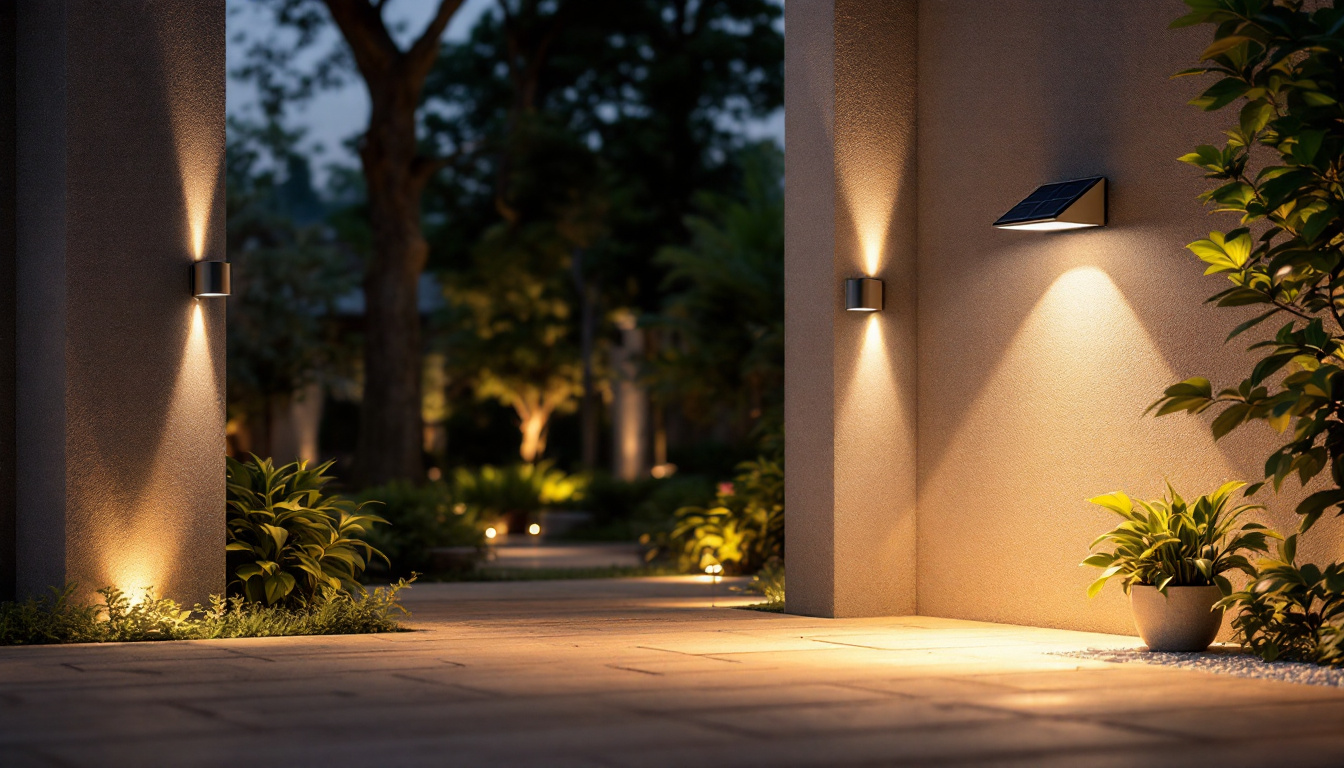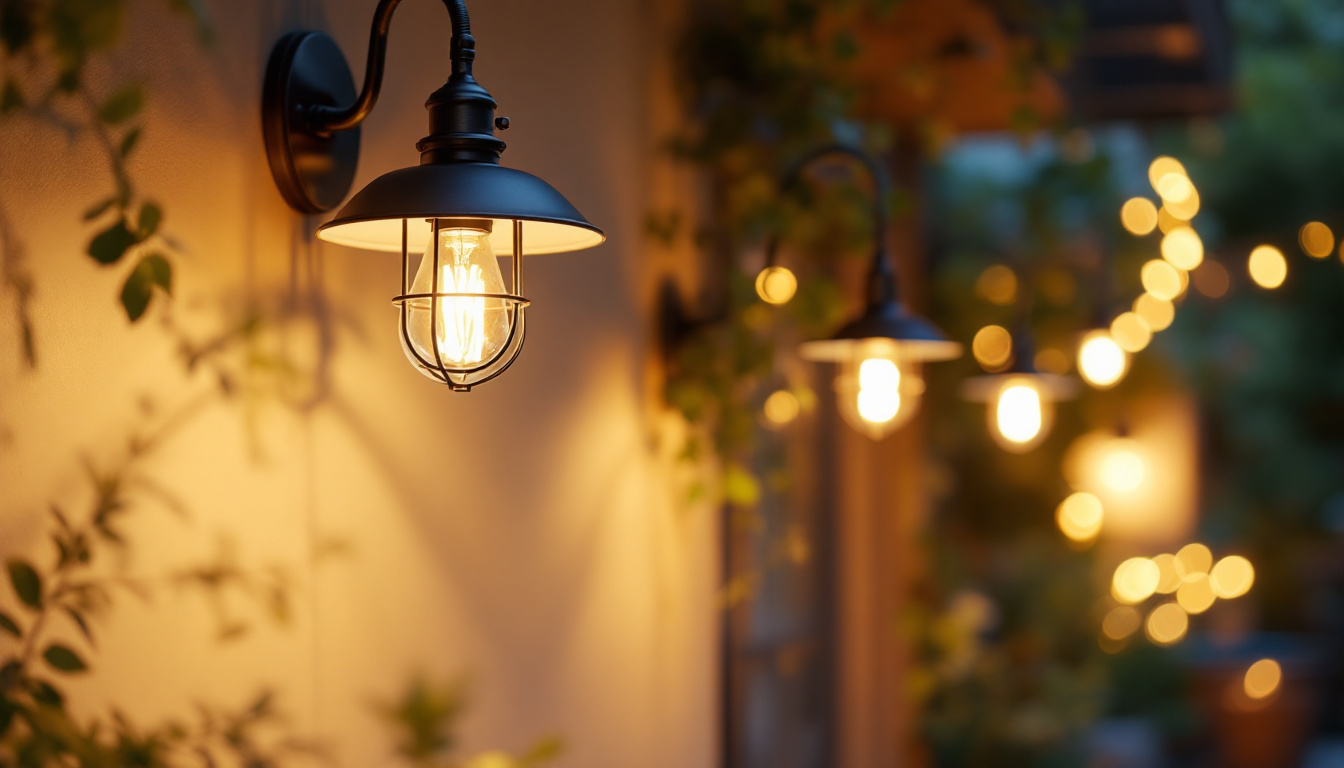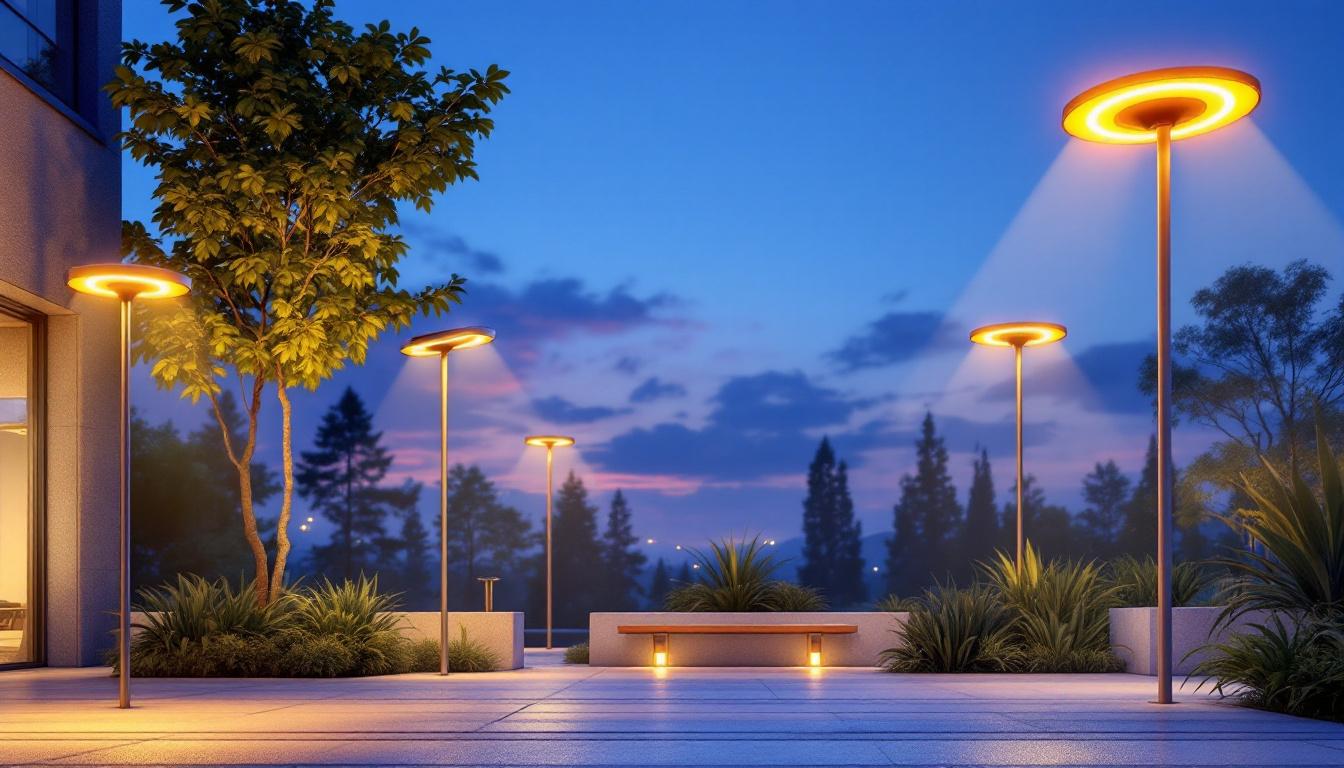
Outdoor solar lights have gained immense popularity among homeowners and businesses alike, offering an eco-friendly and cost-effective lighting solution. However, even experienced lighting contractors can stumble when it comes to installing wall-mounted solar lights. Understanding common pitfalls can help contractors enhance their service quality and ensure client satisfaction. This article explores frequent mistakes made in the installation and selection of outdoor solar lights, providing insights to improve project outcomes.
One of the most critical aspects of installing outdoor solar lights is selecting the appropriate location. Many contractors overlook this step, leading to subpar performance and dissatisfied clients. The right placement not only enhances the aesthetic appeal of outdoor spaces but also maximizes the functionality of the solar lights, ensuring they serve their intended purpose effectively.
Solar lights rely on sunlight to charge their batteries effectively. A common mistake is placing these lights in shaded areas, such as under trees, eaves, or awnings. This not only reduces the charging efficiency but can also lead to premature failure of the lights. Contractors should conduct a thorough assessment of the site to identify areas that receive ample sunlight throughout the day. Additionally, it is important to consider seasonal changes; for instance, trees may grow or change in foliage density, which can alter sunlight exposure over time. Therefore, a dynamic evaluation that takes into account both current and future conditions is essential for optimal placement.
The height at which solar lights are mounted can significantly impact their performance. Installing lights too high can reduce their effectiveness, as the light may not adequately illuminate the intended area. Conversely, lights mounted too low may be susceptible to damage or vandalism. A careful evaluation of the environment and the intended purpose of the lighting will help determine the optimal height for installation. Furthermore, the height should also correspond to the type of solar light being used; for instance, pathway lights typically require a lower installation height to create a welcoming ambiance, while security lights may benefit from being mounted higher to cover a larger area. Understanding these nuances can greatly enhance the overall effectiveness of the solar lighting system.
Not all solar lights are created equal. Contractors often make the mistake of prioritizing cost over quality, leading to poor performance and unhappy clients.
Choosing solar lights made from inferior materials can result in a host of problems, including reduced durability and performance. Low-quality plastic components may degrade quickly under UV exposure, while cheaper batteries may not hold a charge effectively. Contractors should prioritize reputable brands and materials that ensure longevity and reliability, even if they come at a higher initial cost.
The brightness of solar lights, measured in lumens, is crucial for effective outdoor lighting. Contractors sometimes select lights based solely on appearance or price, neglecting to consider the lumen output necessary for the specific application. For example, pathway lights require a different lumen output compared to security lights. Understanding the lighting needs of each area will guide contractors in selecting the right products for their clients.
The battery capacity of solar lights is a vital factor that can affect their performance, especially in regions with limited sunlight. Many contractors overlook this aspect, resulting in lights that do not function as expected.
Contractors must assess the power requirements of the solar lights they are installing. A common mistake is assuming that all solar lights will perform well regardless of battery capacity. In areas with shorter daylight hours or frequent overcast conditions, lights with larger battery capacities are essential to ensure consistent performance. Evaluating the specific energy needs based on the location and usage patterns will help avoid these pitfalls.
Seasonal changes can significantly impact the performance of solar lights. Contractors sometimes fail to account for variations in sunlight availability throughout the year. In regions with long winters or heavy cloud cover, it is crucial to select solar lights with batteries that can store enough energy to last through darker months. This foresight can prevent client dissatisfaction due to inadequate lighting during critical times.
Compliance with local regulations and building codes is essential in any construction project. However, many contractors overlook this aspect when installing outdoor solar lights.
Zoning laws can dictate where and how outdoor lighting can be installed. Contractors may inadvertently violate these regulations by placing lights in restricted areas or using fixtures that do not meet local standards. Prior to installation, it is essential to research and understand the zoning laws applicable to the project site to avoid potential fines or required removals.
Safety standards are paramount when installing any type of outdoor lighting. Contractors must ensure that the installation complies with electrical codes, even for solar-powered systems. This includes proper mounting techniques and ensuring that all components are securely installed to prevent hazards. Failing to adhere to safety standards can lead to accidents and liability issues, making it crucial for contractors to stay informed about relevant codes.
While functionality is essential, the aesthetic appeal of outdoor solar lights should not be neglected. Contractors sometimes focus solely on technical specifications, forgetting that the visual aspect is equally important to clients.
Outdoor lighting should complement the overall design of the property. Contractors may make the mistake of selecting fixtures that clash with the architectural style or landscaping of the home or business. Taking the time to understand the client’s vision and selecting lights that enhance the property’s aesthetics can lead to greater satisfaction and repeat business.
The color temperature of the light emitted by solar fixtures can significantly impact the ambiance of outdoor spaces. Contractors often overlook this detail, leading to mismatched lighting that can detract from the overall experience. Warm white lights may create a cozy atmosphere, while cooler tones can offer a more modern look. Understanding the desired ambiance for different areas will help contractors make informed choices.
Once the installation is complete, the relationship between the contractor and the client should not end. Providing maintenance guidance is crucial for ensuring the longevity and performance of solar lights.
Many contractors neglect to inform clients about the necessary maintenance for solar lights. This can include regular cleaning of solar panels, checking battery health, and ensuring that the lights are free from obstructions. By providing clear instructions and recommendations, contractors can empower clients to take care of their lighting systems, ultimately leading to better performance and satisfaction.
Warranties can provide clients with peace of mind regarding their investment. Contractors sometimes fail to communicate warranty details or offer limited warranties that do not cover critical components. Clearly outlining warranty terms and conditions can enhance client trust and encourage them to choose quality products.
Accurate project estimation is vital for maintaining client satisfaction and ensuring profitability. However, some contractors underestimate the time and costs associated with installing outdoor solar lights.
Site preparation is often a significant part of the installation process. Contractors may underestimate the time required for tasks such as clearing vegetation, leveling the ground, or addressing drainage issues. Failing to account for these factors can lead to delays and increased costs, ultimately impacting client satisfaction. A thorough site assessment will help in providing more accurate estimates.
Clients may not realize that outdoor solar lights require ongoing maintenance. Contractors sometimes fail to communicate the potential costs associated with maintenance and repairs, leading to misunderstandings later on. Including maintenance considerations in initial estimates can foster transparency and help clients budget appropriately for the long term.
Testing the solar lighting system before completing the installation is a crucial step that many contractors overlook.
Before finalizing the installation, it is essential to test the functionality of each solar light. Contractors may skip this step, assuming that all components are working correctly. However, testing ensures that the lights illuminate as intended and that there are no issues with the solar panels or batteries. This proactive approach can help identify and resolve problems before the client takes possession of the system.
Many solar lights come with adjustable settings, such as brightness levels and motion detection sensitivity. Contractors may neglect to configure these settings according to the client’s preferences. Taking the time to customize the settings ensures that the lights perform optimally and meet the client’s expectations.
Outdoor solar lights provide an excellent opportunity for lighting contractors to offer sustainable and efficient solutions to their clients. However, avoiding common mistakes is essential for ensuring successful installations and satisfied customers. By paying attention to factors such as location, quality, battery capacity, compliance with regulations, aesthetics, maintenance, accurate cost estimation, and thorough testing, contractors can elevate their service quality.
In an evolving market, staying informed about the latest technologies and best practices in solar lighting can set contractors apart from the competition. By focusing on these critical aspects, lighting professionals can build a reputation for excellence, leading to increased referrals and long-term client relationships.
Ready to avoid common installation mistakes and delight your clients with high-quality outdoor solar lighting? At LumenWholesale, we provide lighting contractors with spec-grade lighting solutions that combine quality, affordability, and convenience. Our extensive selection of solar lights meets the highest industry standards, ensuring you deliver reliable and high-performance lighting for every project. Take advantage of our unbeatable wholesale prices, hassle-free bulk buying, and free shipping to get the best value for your lighting needs. Elevate your service and client satisfaction today by visiting Wholesale Lighting at the Best Value.

Discover how barn lights can illuminate new business opportunities for lighting contractors.

Discover the transformative journey of solar-powered outdoor lighting fixtures and their impact on the lighting industry.

Discover the comprehensive guide to Rab Lighting Inc, a leader in innovative lighting solutions.

Discover why purchasing outdoor sign lights in bulk from local distributors might not be the best choice.